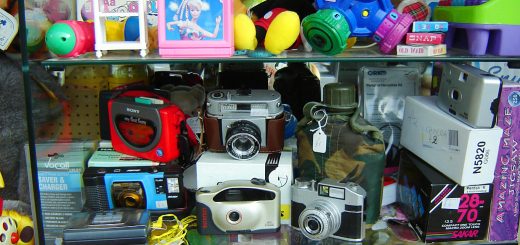Who gets what and why – matching markets design

Today’s post is about who gets what and why. We’re going to look at this topic from four different angles – market structure, globalisation, technology and inequality.
Today we’ll focus on market structure.
Contents
Who gets what?
This is a follow-up to our recent discussion about whether Economics tells us anything useful, and a prelude to our forthcoming posts based around Ha-Joon Chang’s book “23 Things They Don’t Tell You About Capitalism”.
[amazon template=thumbnail&asin=0141047976]
It will also set the scene for a future post on executive pay.
As we’ve previously stated, Economics is the study of who gets what and why, and so it’s inevitably political.
The phrase itself comes from a book by Alvin Roth, who won a Nobel Prize for his work on Market Design.
[amazon template=thumbnail&asin=0007520786]
We’ll look at that book today , but in a subsequent post we’ll also approach the subject from two other perspectives:
- globalisation, and people’s growing opposition to it despite the benefits it has delivered
- inequality, and how much of it people are prepared to tolerate
We’ll also take a look at the similarities between the looming technological revolution and the consequences of globalisation which are now being resisted by those most affected.
Market design
How this is all supposed to work.
- How do we decide who gets what?
The Econ 101 approach is price discovery.
- The market works out the price at which we have an equal numbers of buyers and sellers, and the market “clears”.
- This applies to apples and oranges, to houses, and to an hour of labour.
- The government need only intervene where one buyer or seller has monopoly power over price-setting, or where externalities (pollution, climate change) are not being taken into account.
But what about situations where we don’t want to assign a price (although we could if we had fewer moral qualms)? ((I should declare at this point that I have fewer qualms than most about markets being driven by price, but we live in a democracy, and in any case the economics is interesting ))
- Examples from today’s West include organ donation, healthcare and state school places ((Though of course in the UK we have parallel – and superior – private education and medical systems that are driven by price ))
Alvin Roth
Alvin Roth won a Nobel Prize for his work on market design and “stable allocations”, an offshoot of the game theory made famous by Nash.
One interesting point that Roth makes about how to look at markets is that non-cooperative and cooperative models should be used not to look at different markets (or types of game) but instead to ask different questions about the same market / game:
- is the outcome stable?
- is it safe to reveal your preferences?
The example markets Roth talks about are the ones listed above:
- school and university places,
- kidney transplants,
- jobs where there is an excess of demand (eg. working for Google, or being a film director) and
- marriages.
Matching vs commodity markets
Roth would call his markets “matching” markets, where both sides have to want the transaction to go ahead.
- The matching problem is to make sure that after the matching process is complete, there are no two people who are not matched to each other but would each prefer that they were matched to each other.
- It’s about finding a stable and efficient configuration.
This also implies that there is no subset of market participants (“players”) who can go off on their own and do better than they could do in the market.
Roth distinguishes matching markets – a subset of what might be called scarcity or “elite” markets – from “commodity” markets, where transactions are arm’s length and anonymous.
- The stock market is the best example – I will never know or care whose stocks I bought, or to whom I sold.
Even commodity markets typically grew out of matching markets, since initially there would be no quality standards.
- So the first market for wheat would have involved negotiating a specific price with a specific farmer for a specific crop.
- This is very inefficient.
- Today’s wheat market in the US has eight types of wheat and five quality grades.
There are some elite markets – seaside homes, art and antiques – where we do let price do all, or at least the vast majority, of the work.
- But these are asset transfers at heart, just expensive ones.
Roth’s underlying motivation is that introducing new markets – by expanding people’s idea of what a market is – or making existing markets work better, can lead to economic growth.
What is a good market?
For Roth, there are three attributes of a good market:
- thickness, which is really a synonym for liquidity – there are lots of potential transactions
- lack of congestion – not all offers need to be processed simultaneously, and neither is there a long delay between successive offers and acceptances / rejections
- trust and safety – in the same way that credit cards remove credit risk from transactions, markets must make it safe to participate and to reveal information
The clearing house (deferred acceptance)
The basic solution to Roth’s matching problem is the clearing house model – also known as “deferred acceptance”, as used by universities.
- Students rank their favourite universities
- Universities rank their favourite students (or define rules by which to choose students)
- Students apply to their favourite universities in order and are awarded a (tentative) place or not
- Rejected students apply to their next university, and so on
- “Better” students applying at a later stage may displace students awarded a tentative place
- When all places have been awarded, and no-one is displaced, we have a solution
The key problem with a clearing house solution is that people (students or colleges) will not submit their true preferences.
- They will probably try to game the system to produce the outcome they prefer.
This is despite Roth proving that it is safe under such a model for students to reveal their true preferences.
- The same is not true for the colleges under a deferred acceptance model (assuming the information could be leaked by the clearing house), unless the market is very large.
- It’s also not safe for students to reveal their true preferences under an “immediate” acceptance model, which was widely used by US school systems in the past.
- The key thing on such a system is to make your first choice a school that you have a good choice of getting into.
But with deferred acceptance, gaming the system should be unproductive.
Doctors
An example of how this works in practice is the market for interns and residents – recent graduate doctors – in the US.
- Competing for the best interns before World War Two, hospitals began to make offers earlier and earlier in the students’ final year.
- And they gave the students less and less time to accept their offer.
This also made it harder for the hospitals, since the students’ fourth year grades weren’t known at this stage.
By 1940 – forty years after this system was introduced – doctors were being hired two years before graduation.
- This was half-way through their degree, before most doctors knew what specialism they wanted to follow.
- The system was broken.
In 1945 the medical schools intervened, and stopped releasing information about students before a fixed date.
- Once the date was fixed, it was easy to move it backwards, until it reached the final year once more.
This brought back the original problem – that all hospitals made offers at the same time (known as a “thick” or congested market).
- Offers were open for 10 days, and on the 10th day, a doctor would accept the best offer he had.
- To try to fix that, the open period was reduced to 8 days.
- All that did was lead to a chaotic 8th day.
By 1950, offers were made on the phone and had to be accepted or declined on the spot.
So everyone got together and formed a voluntary clearing house, which adopted a deferred acceptance model.
- And everyone lived happily ever after.
Married couples
Well, not everyone. Ironically, particularly not those who were trying to live happily ever after.
- When the clearing house was set up, there were almost no female medical students in the US.
- So the system ignored married couples.
Today 50% of medical students are women.
In the 1970s, when female students were about 10% of the total, the system started to run into problems.
- Couples were being assigned positions far apart, or positions that were physically close but that they didn’t like (for example, because one position was much better than the other).
- The system wasn’t asking them to specify pairs of positions.
- Which meant that the solution found by matching wasn’t stable any more.
So they called in Alvin Roth, and he and Elliott Peranson redesigned the algorithm to cope.
Kidneys
Kidneys are an interesting market.
- Kidney disease is deadly, but unlike other transplant markets, people each have two kidneys, and healthy people can manage with only one.
This give people the opportunity to donate to a loved one who needs a new kidney.
- But of course, not all kidneys are suitable for all people (for example, blood types have to match).
This leads to the possibility of kidney exchanges, where I donate my spare kidney to the person you love, and you donate your spare kidney to the person I love.
- Like Strangers on a Train in reverse.
Kidney congestion
Unfortunately, ((Some would say fortunately )) you can’t make a contract in the US to sell a kidney.
This means that the transplant operations have to happen simultaneously.
- I would be in one hospital with your loved one, and you would be in another hospital ((Or if we were lucky, the same hospital )) with my loved one.
Leaving even a day between the transplants would lead to unenforceable contracts.
This is a bit of a problem with a two-way (four operation) exchange – you need four operating theatres and four surgical teams at once.
- It’s an even bigger problem for the larger exchanges that might be possible.
- A three-way exchange needs six ORs and six teams.
- This is now reasonably easy to arrange.
Non-directed donors
But what about longer chains, and in particular those triggered by non-directed donors?
- Non-directed donors (NDDs) are either dead, or are giving up a kidney for altruistic reasons, rather than to help a specific loved one.
There’s a shortage of NDDs, and it would be more efficient for each NDD to trigger the maximum number of transplants.
- The good news is that NDD chains don’t need to be simultaneous.
The big risk in non-simultaneous chains is that a pair donates a kidney before they receive one.
- That means they’ve undertaken a surgery that didn’t help them, but even worse, they have no spare kidney to trade again in the future.
With an NDD, each pair can receive a kidney before they donate.
- This makes the worst case scenario that an NDD kidney is given to a patient who isn’t part of a pair (because their partner drops out).
- This happens sometimes anyway – and is the natural conclusion to any NDD chain – so it’s not such a serious problem.
Since NDD chains were introduced, there have been non-simultaneous chains of 30 pairs (60 operations).
- There’s also been a massive increase in the number of annual kidney exchange transplants (from 2 in 2000 to 590 in 2013).
Selling kidneys
Selling kidneys is illegal just about everywhere. ((Roth says that it’s legal in Iran ))
But as Roth says “making markets illegal doesn’t stop illegal markets”.
- The World Health Organisation (WHO) estimates there are more than 10,000 illegal organ transplants each year.
Since there is a “surplus” of kidneys (everyone has two), allowing the market to set a price would mean more people got transplants.
- Thousands of people die from kidney disease each year in the US alone.
But lots of people think this is a bad idea, and so the law sets the price of a kidney at zero.
- At this price there aren’t many willing sellers.
Roth labels these transactions “repugnant” (to some, at least).
Other (mostly historical) repugnant markets include child surrogacy, food (eg. horse or dog meat), sex, slavery, religion, dwarf tossing and even paying interest on loans.
Dating, jobs and super likes
While the theory of market design using clearing houses is interesting, most markets don’t use them.
- In most markets you won’t be asked your preferences before you transact.
- An employer won’t usually ask if they are your first choice, and if they did, it would be safe to lie.
Two current problems are dating websites and job applications, because in each situation, the internet has removed the costs and efforts of applying.
- Thus these are now congested markets, with every applicant applying for every position.
- When there are more applications, more applications are ignored.
- When most applications are ignored, people make more applications.
- And so the problem won’t solve itself.
One step towards solving this problem is the concept of “super likes” which the (job or dating) site limits to a small proportion of applications.
- Recipients then know to pay special attention to these “super likes”.
- Note that this is a return to a version of the ranking system in clearing houses.
Signalling (conveying information) and being able to change your mind about early choices seem to be key factors in clearing these markets.
High frequency trading
Roth is not a fan of high-frequency trading (HFT).
- Continuous order books mean that whoever bids or offers first gets the trade.
- This is a “race with no economic purpose” according to Roth.
- Market participants would argue that occasional arbitrage opportunities mean that the market is more efficient.
Roth says that HFT makes a thick market thinner, leading to (temporary) mis-pricing like the famous “flash crash of 2010.
- Other problems include the money wasted on the HFT infrastructure, and the wider bid-ask spreads used by market makers to protect themselves against ever-faster market “news”.
To fix all this, Roth has proposed that trading be batched into one second periods.
- All the bids and asks would be collected together.
- A price would be produced automatically that matched supply with demand.
This would mean that traders had to compete on price rather than speed, and lead to the most efficient prices.
- This sounds like a good idea to me.
Conclusions
We’ve covered quite a lot of ground today:
- In commodity markets, trades are anonymous and the price does all the work
- In matching markets, both sides have to want the trade to go ahead
- Solutions need to be stable and efficient, with no improvements available to a subset of market participants
- A good market has thickness (liquidity), lack of congestion and safety
- The basic solution to a matching market is the clearing house or deferred acceptance model
- Gaming a well-designed clearing house should not be possible
- Kidneys are an interesting market because people have a spare one but selling it is illegal
- So exchanges between pairs (donors and receivers) or longer chains of people are possible
- Congestion (synchronicity) limits the length of chains
- Using non-directed donors and non-simultaneous chains has led to much longer chains and many more kidney exchanges
- Legally selling kidneys should be investigated further, as illegality doesn’t prevent a black market. and more lives could be saved
- The internet has lowered the cost of application on dating and job websites
- The use of rationed “super likes” can counteract this over-supply
- High frequency trading can make a market thinner, leading to mis-pricing (eg. the “flash crash”), wider spreads and wasted investment in competition through speed
- Batching bids and asks into one-second periods would make traders compete on price, and lead to more efficient prices
Until next time.


















